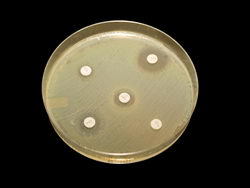Mobile DNA elements and antimicrobial drug resistance
Horizontal gene transfer is the process by which an organism acquires genetic material from another organism without being its offspring. Acquisition of DNA by that mechanism occurs through mobile DNA elements and contributes to the spread of microbial drug resistance. However, little is known about the nature of these elements and how they are implicated in the epidemiology of bacterial resistance. With this in mind, the EU-funded 'Role of mobile genetic elements in the spread of antimicrobial drug resistance' (DRESP2) project investigated the molecular epidemiology of different families of mobile genetic elements. Consortium members studied plasmids – circular double-stranded DNA molecules normally found in bacteria – as vehicles for the horizontal transfer of mobile genetic elements. Structural and functional analysis of these DNA elements generated an extensive array of genomic data and provided clues on their molecular function. Project partners also elucidated the transfer mechanisms of these elements and their regulation. All this information was made available to the scientific community through publications. Study results advanced current knowledge in the field of mobile genetic elements and their role in antimicrobial resistance. Additionally, they produced valuable tools for diagnosis and health monitoring.







